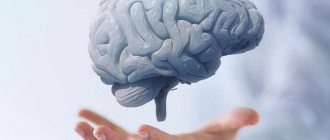Home page » Psychology of color » Green color
Green is the most life-affirming color. This is the color of green plants.
It symbolizes the growth and development of not only plants, but also people, animals, and human thoughts.
It is also the color of the human struggle for life . Since ancient times, it has become a symbol of hope for survival for many peoples (remember historical periods of drought).
The color green can symbolize inexperience and immaturity (“young-green”), since many plants that are initially bright green wilt and eventually turn brown or black.
Neutral green , located midway between the two poles - blue and yellow, is the color of hidden possibilities - the ability to be passive, like blue, or, conversely, energetic, like yellow. But green remains neutral and therefore remains static. It is with this color that vacations, recreation outside the city, green forests and water meadows are associated - everything that is called the “womb of nature”. Walking through the forest among green trees helps you find the necessary inner balance and leads to recovery.
Green color has a positive calming effect . Calm in itself, green brings balance to our “crazy” life, encourages us to escape from the hustle and bustle and helps us find the desired harmony . Therefore, green - the middle color in the color spectrum (remember the rainbow) - is readily used in medicine.
For all psychosomatic illnesses, contemplation of the color green has a beneficial effect on a person’s mental state and, thus, indirectly contributes to physical recovery.
G. Braham in his book says that there are some differences in the understanding of the psychology of green by Johann Goethe and Kandinsky (an outstanding Russian painter, graphic artist and theorist of fine arts), on the one hand, and Max Lüscher and Freiling, on the other. But this can be explained by the fact that these researchers took different shades of green as a basis.
Wassily Kandinsky thought this:
Absolute green is the calmest color that exists. It doesn’t move anywhere and has no overtones of joy, sadness, or passion. He doesn't demand anything, doesn't call anywhere. This is a motionless element, content with itself, limited in space... The permanent lack of movement is what has a beneficial effect on exhausted human souls, but, however, after calming down it already seems a little boring.
Braham assumed that this description characterizes a rich, “warm” green color.
In M. Luscher’s description it is more of a “cold” green color with a bluish tint. Luscher described him this way:
In green, the lively energy of yellow comes to the fore and the calming movement of blue contrasts with it. Both of these phenomena appear in green color as if in a preserved form. Therefore, green color is static.
Among the main qualities of green, Luscher mentions hardness, constancy and perseverance .
They correspond to character traits such as consistency, self-confidence, self-sufficiency and self-esteem.
Green, with a predominance of blue over yellow, appears colder, harder, and more persistent. This shade, according to Luscher, characterizes a person who does not succumb to either internal or external temptation, a person who is convinced and self-confident , living by the principle: “Follow your line and fear nothing!”
Confidence in one's convictions and moral integrity are the foundations on which self-respect . Internal significance, that is, recognition of one’s own authority and dignity (a passive property of any power) - this is the psychological meaning of green. (G. Braham).
Braham compared the color green to a tiger that is preparing to leap, but remains outwardly calm, because this color is full of concentrated potential tension:
Green color does not tend to emit or attract energy. He simply exists and that's all. But how does it exist: outwardly passive, green color hides behind itself enormous willpower, the will to grow . Outwardly calm and boring (“green melancholy” in an extremely negative manifestation - N.G.’s note), he combines all the vital forces - the desire to assert himself and the confidence that everything will work out .
According to research, teenagers have a special affinity for pure green, but they really dislike pastel green. Freiling explains this phenomenon by the relationship of the teenager’s inner self to the outside world. It is during this period of development, when a person becomes a whole person , that a special need for pure green color arises.
So, the features that characterize the psychological essence of the color green :
- perseverance;
- strength of will;
- dormant energy;
- peace;
- harmony.
The meaning of green in psychology
Green color and its shades are natural. Trees, grass, flowers, etc. are painted in it. It is made by mixing blue and yellow. To create different tones, the concentration of one or another component is changed.
First of all, green symbolizes freshness and development. It brings with it vital energy, youth, freedom. Calm shades calm and soothe.
There are many shades of green in the color scheme. The most common:
- turquoise;
- dark green;
- light green;
- olive;
- aquamarine.
Each of them has its own meaning.
- Dark green color in psychology means passivity, lack of movement. A person is in no hurry to live. He enjoys every moment, relaxes. This shade encourages you to look into your inner world, analyze emotions, sensations and feelings, and think.
- Blue-green is another name for the color of sea green, turquoise. This is a cold tone that denotes wind, sky, coolness. It invigorates, which is especially important for depression and stress, motivates to action, and helps restore strength.
- Yellow-green is considered the lightest in this color scheme. In psychology, this shade of green signifies a love of change, rejection of patterns and stereotypes, and freedom. This is openness in communication, a friendly attitude towards others, satisfaction, calmness. Psychologists recommend using this tone for meditation. It helps bring order to thoughts and feelings.
- Olive (brown-green). Carries negative energy. It says that a person is morally exhausted. It has a beneficial effect on those who have increased sensitivity, removing excess emotions and negativity.
The interpretation of a particular shade depends on its intensity.
For woman
Green color is considered attractive in women's psychology. If this is the favorite spectrum of a representative of the fair sex, we can say that she is proud and principled. She will always defend her opinion and point of view to the end and will not tolerate any manifestation of injustice. Such people are aware of their importance and know how to manage the emotions of other people.
The influence of color on learning
Any learning is a complex process. According to many studies, color plays a key role in creating a positive environment conducive to learning and helps develop the potential inherent in a person.
So, for everyone who wants to make it easier to remember this or that information, it is important to know which colors help you focus on learning, and which ones only distract attention and irritate.
If we consider color as part of the electromagnetic spectrum, then it is nothing more than energy that has its own magnetic frequency.
What if we told you that colors can influence neurological pathways in the brain and can create biochemical reactions in the brain? Hundreds of scientific papers prove this.
In one of these studies, American doctor Robert Gerard proves that each color has its own unique wavelength, and all colors have different effects on the human brain.
With the right colors for a classroom or online work program, people's attention and behavior can change dramatically. Color affects our psychological state.
Let's go through the colors and see what they mean to us as students and look at the biochemical reactions they can cause.
Keep in mind that the conclusions drawn are of a general nature; specific cases must be considered separately, since each person has his own characteristics.
We will use a broad approach that will help us choose the “right” colors for most people who are hungry for knowledge.
So, why are color psychology and learning inseparable concepts?
What kind of people like
There are many people who like the color green and its shades. Psychologists have identified their characteristic personal qualities:
- Reasonableness, balance. A person is always objective in his judgments, he easily finds a common language with others, and it is pleasant to communicate with him.
- Willpower, determination. Green lovers don't dream, they act. They know exactly what they want and whether they can get it.
- Sociability, charm. The psychological portrait of such people says that they are interesting interlocutors. It is easy for them to join a new company, make acquaintances, and find themselves in the center of attention. They are drawn to them. People around you are attracted by openness, sincerity, friendliness, and kindness.
- Honesty. Natures who prefer green shades are not capable of meanness. Everything they achieve is the result of hard work.
- Mercy. A person is always ready to provide support to someone who is in trouble. He actively fights injustice. Often such people are involved in charity work and are active participants in various foundations.
- Curiosity. Green spectrum lovers are avid travelers. They strive to learn something new and never sit in one place. They are ready to develop and improve, to work on their shortcomings.
Impact on the psyche
In psychology, green color is harmony and calm. That is why it is often used in the process of meditation or relaxation. It helps normalize the functioning of the heart and blood vessels, cope with anxiety, fears, and self-doubt. It also helps increase self-esteem.
Psychologists recommend surrounding yourself with green things for those who have suffered psychological trauma. It is also useful for children, as it helps improve concentration. You may have noticed that classroom boards are often made green.
What else can be said about the meaning of green in psychology and its influence on the psyche?
- Improves sleep. If your child cannot sleep for a long time, add green lighting in the room. The same goes for adults. In the case of them, you can hang curtains of the same color in the bedroom or use it in the design of the walls.
- Has a beneficial effect on the nervous system. Green will help you stay positive and cope with fears and anxiety. Have you noticed that psychologists' offices are often painted green or one of its shades? They can also be found in the wards and corridors of hospitals.
- Calms the nervous system, relieves emotional excitement. Helps hot-tempered people control their behavior.
- Actively used in color therapy. Normalizes heart function, lowers blood pressure, strengthens the body's defenses, and helps in the fight against colds.
Orange: the color of life!
Imagine an orange sun setting on the horizon. Great, isn't it? Orange color can lift your spirits, stimulate mental activity, it promotes comfort and improves the functioning of the nervous system .
The influence of orange on the perception of information is very positive. Studies claim that it increases oxygen levels in the blood and leads to a feeling of alertness and readiness to take on the toughest tasks.
It is worth emphasizing that when people are looking for some facts or important information, contact with the color orange increases concentration. But because of its energy and brightness, orange can sometimes be overwhelming. In other words, this color works best in small doses.
The secrets of the color orange are known in Feng Shui, where it is considered as the "Yang" color that stimulates focus and promotes composure.
According to experts, it is better to choose a juicy orange color to increase productivity, and a softer one for relaxation. Thus, the color orange should be used with caution; in some cases it helps maintain concentration and work mood, but in others it only distracts.
Green in clothes
A person whose wardrobe is dominated by this color strives to impress others. He shows his constancy, strength of character, and in some cases, toughness.
Those who wear things of this color spectrum love everyone's attention and want to achieve recognition in society. They are afraid of competition and also of falling under someone's influence.
In the interior
In the interior, green color helps to create a comfortable, relaxing environment. It is appropriate to use in bedrooms or children's rooms. But you should be careful. Because it will help you fall asleep, but will create certain difficulties in waking up.
The green spectrum goes well with all colors and shades except purple. It is suitable for decorating walls, ceilings, floors or, for example, furniture and decorative elements.
Blue is the color of productivity
Quite a lot of scientific research tells us that people whose work requires a high cognitive load, such as scientists, doctors or inventors, are especially productive in rooms with blue and blue tones.
Blue color works great in situations with high complexity. Blue paper and blue ink are good to use to improve understanding of any task.
In general, blue appears to be a relaxing and calming , with lighter shades appearing friendlier and darker shades appearing somewhat gloomy.
Many psychologists strongly recommend the use of blue colors in classrooms and training studios. Moreover, if you add a little orange, this will create excellent conditions for stimulating a high level of concentration.
It is also very important not to overdo it with the color blue - it can create a feeling of detachment and coldness.
Negative characteristic
In addition to positive properties and characteristics, green color also has a number of negative ones. Firstly, its excess leads to overexcitation of the nervous system. This is especially dangerous for people who suffer from frequent nervous breakdowns, anxiety, and mood swings. Bright colors make them impulsive and irritable.
Secondly, shades of the green spectrum are contraindicated for those who experience apathy, emotional and mental exhaustion. Pale tones will only worsen the situation, take away energy, and provoke a breakdown. Psychologists believe that an excess of green encourages such people to withdraw into themselves, separate from the world around them, and stop communicating with family and friends.
"Color Disorders"
The eye reacts to three primary tones: blue, green and red. And the brain perceives colors as a combination of these three primary colors. If the retina loses the ability to distinguish any color, then the person also loses it. For example, there are people who are unable to distinguish green from red. 7% of men and 0.5% of women have such features. It is extremely rare that people do not see colors around them at all, which means that the receptor cells in their retina do not function. Some suffer from weak twilight vision - this means that they have weakly sensitive rods. Such problems arise for various reasons: due to vitamin A deficiency or hereditary factors. However, a person can adapt to “color disorders”, so without special examination they are almost impossible to detect. People with normal vision are able to distinguish up to a thousand shades. A person's perception of color changes depending on the conditions of the surrounding world. The same tone looks different under candlelight or sunlight. But human vision quickly adapts to these changes and identifies the familiar color.








